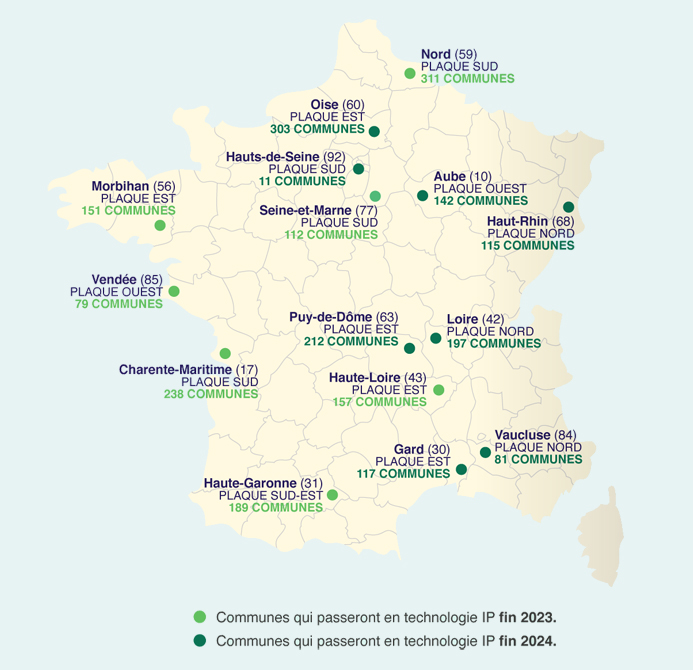End of the public switched telephone network

To anticipate the implications of the gradual phasing out of the PSTN for its consumer customers, GRTgaz has made plans to switch its remote reading architecture to the digital IP system. In practical terms, what does this involve?
PSTN is the technology that has historically been used to provide landline telephony services. It relies on a physical copper network, which generally culminates in an F-010 telephone socket in subscribers’ premises.
The last-mile copper cable enables telephony transmission via the PSTN, as well as various xDSL technologies that give simultaneous access, via a box, to IP internet and television services. At GRTgaz, the PSTN is used to return metering information from the majority of consumer customers to network supervision instruments.
Why is the PSTN being phased out?
The gradual phasing out of the PSTN was decided by France's Electronic Communications, Postal and Print Media Distribution Regulatory Authority (ARCEP), to promote the spread of more up-to-date wired and wireless technologies. Users who want to hold onto their landline telephone, without having to subscribe to an internet package, will still be able to do so.
When is the PSTN planned to end?
Every year since 2018, Orange have indicated which geographical zones (the so-called “plaques”) are earmarked for the end of PSTN technology. Following this announcement, affected customers have five years to migrate their subscription or PSTN fleet to an “IP-only” solution. The current list of municipalities earmarked for PSTN zone closures (“plaques”) in 2023 and 2024 is available on le site Fédération Française des Télécoms.

What will the consequences be for GRTgaz customers?
GRTgaz is working on a project named “Telester” to switch the gas networks’ remote reading architecture to the IP format. Between 2022 and 2028, with the development of new applications and means of communication, GRTgaz is replacing its customers’ metering points according to the disassembly schedule announced by Orange. The only impact will be that the volumes of gas delivered will be estimated while delivery station devices are being replaced. GRTgaz will look after all works planning and replacement solutions needed for its remote reading points. To support you and prepare for our teams’ on-site work, the company will be holding annual webinars for customers affected by the migration process during that year.
Publications
